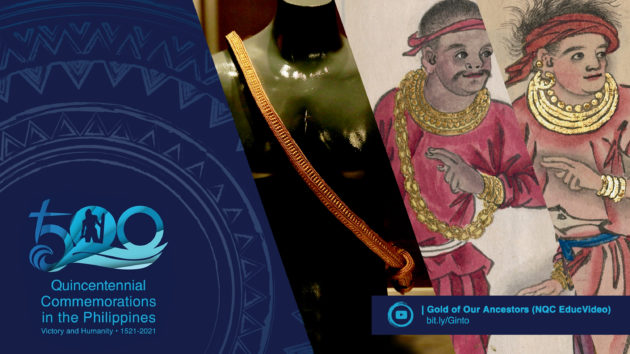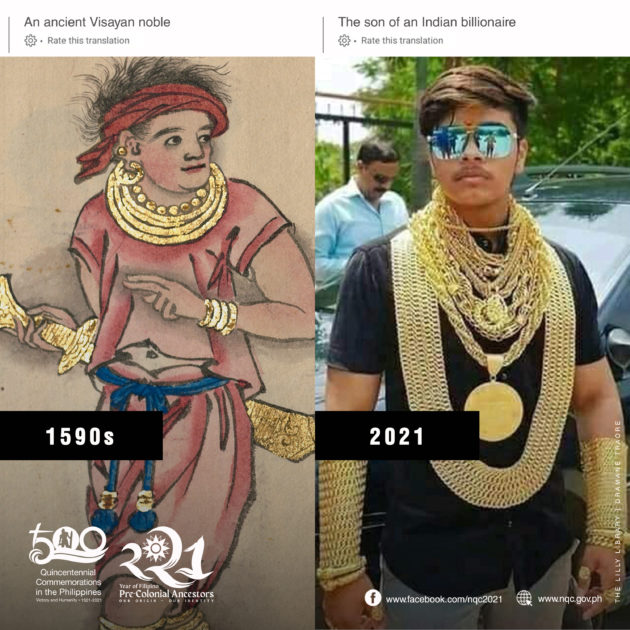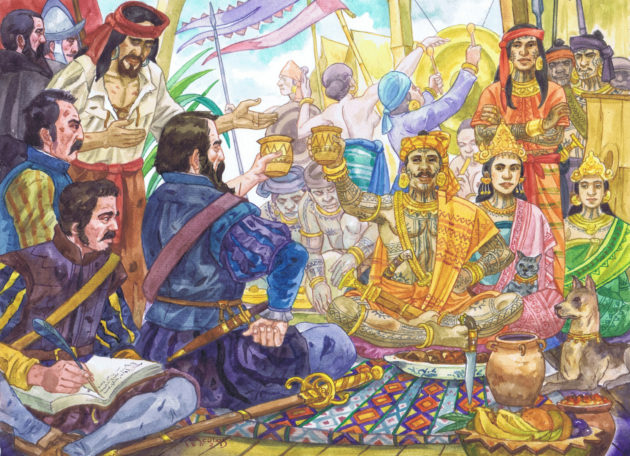Gold of Our Ancestors
Posted on 14 September 2021
By National Quincentennial Committee Secretariat
On 29 March 1521, Ferdinand Magellan, the captain-general of the Armada de Maluco, was surprised by the gold in the life of our ancestors. He realized this when he met at Limasawa (in today’s Southern Leyte) the brother of Rajah Colambu, Siaiu, the rajah of Butuan-Calaghan. Antonio Pigafetta, the chronicler of the first circumnavigation of the world, described the Rajah of Butuan as “very grandly” dressed and decorated. He was “the finest looking man that we saw among those people,” he added.

Through Pigafetta’s description of the rajah of Butuan we can further imagine how a pre-colonial ruler looked like: “His hair was exceedingly black, and hung to his shoulders. He had a covering of silk on his head and wore two large golden earrings fastened in his ears. He wore a cotton cloth all embroidered with silk, which covered him from the waist to the knees. At his side hung a dagger, the haft of which was somewhat long and all of gold, and its scabbard of carved wood. He had three spots of gold on every tooth, and his teeth appeared as if bound with gold. He was perfumed with storax and benzoin. He was tawny and tattooed all over.”

Pigafetta’s observation of the Butuan rajah is consistent with the civilization Butuan had, especially the abundance of gold, to wit: “Pieces of gold, of the size of walnuts and eggs, are found by sifting the earth in the island of that king (Siaiu) who came to our ships.”

Watch our educational video on the gold of our ancestors below:
Ginto ng Ating mga Ninuno | Gold of Our Ancestors
2021 is the Year of Filipino Pre-Colonial Ancestors by virtue of Proclamation No. 1128, s. 2021. Also this year, we commemorate the Philippine part in the ac…

